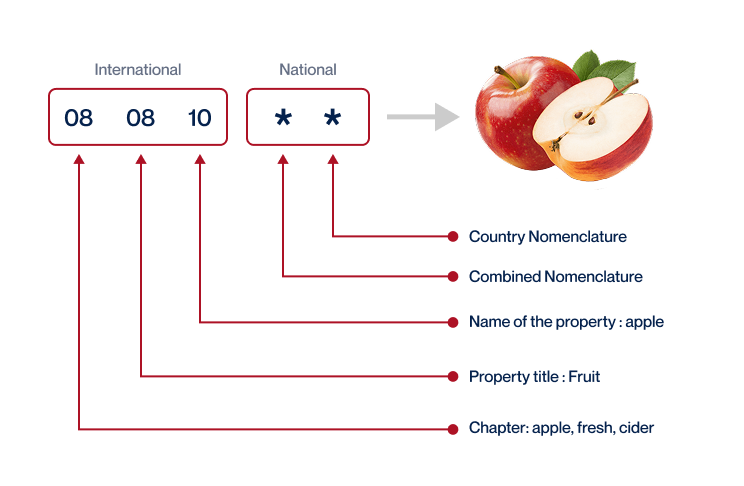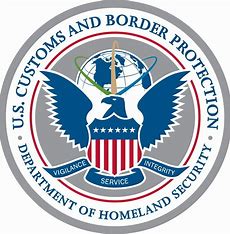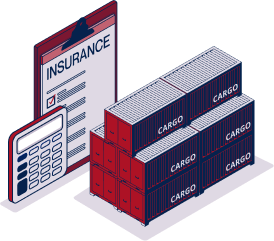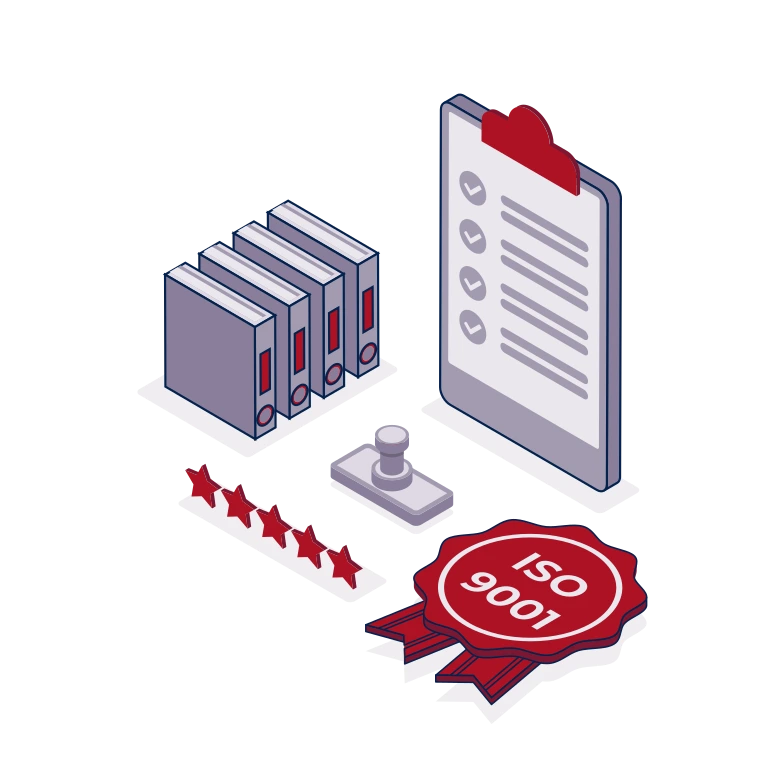Freight Shipping between US and Cyprus | Rates – Transit times – Duties and Taxes
First off, shipping goods between the US and Cyprus isn't as complex as trying to navigate traffic in downtown Manhattan while drinking your morning coffee – but it can certainly feel that way! The greatest bottlenecks? Figuring out freight rates, customs regulations, and the ever-variable transit times. This comprehensive guide is your toolbox for mastering the maze of International freight. Expect detailed discussion on different types of freight options (Air, Sea, or Rail? That is the question), the nitty-gritty of customs clearance, understanding duties and taxes, and pinpoint advice tailored specifically for businesses. If the process still feels overwhelming, let DocShipper handle it for you! We shoulder every minutiae of the shipping process, from transportation, customs clearance to administrative procedures – turning what feels like insurmountable challenges into everyday successes for your business.
Which are the different modes of transportation between US and Cyprus?
Which are the different modes of transportation between US and Cyprus? Starting in the US and heading to Cyprus, a land tucked in the Mediterranean, may feel like a hop, skip, and a jump away. But it’s over 6,000 miles! Delivery trucks can't swim, and trains don't have wings. So, how do we conquer this distance challenge? We move by air or sea. Think of it like playing hopscotch across seaports and airports. Your choice between flight or sail will depend on what you're moving, how fast it must reach, and your budget. It's like choosing between a speed boat and a sailboat for a vacation. Both will take you there, but each offers a different journey experience.
Need help with your shipment?
Need assistance with your shipment? Dont hesitate to contact us even for a simple question. Choose the option that suits you
Live chat with an expert Chat on WhatsApp Free Quote 24hHow can DocShipper help you

Sea freight between US and Cyprus
Ocean shipping forms a vital trade artery between the US and Cyprus, with cargo routes threading through key ports such as New York, Los Angeles, Limassol, and Larnaca. Though it may test your patience, sea freight ultimately wins the wallet, offering significant savings for high-volume goods. But as businesses often find out the hard way, the deep waters of ocean shipping can hide treacherous reefs of misunderstanding and missteps. Whether it’s grappling with complex custom requirements, choosing the right type of containers, or just figuring out how to mitigate the inherent delays, the pain points are many. Fear not! As we delve deeper into this guide, we untangle these issues, revealing practical best practices and specifications to streamline your trans-Atlantic logistics. Imagine your cargo journey more like a well-orchestrated symphony, instead of a Pandora’s box of woes, with each one waiting to spring forth. Brace for a smoother sailing.
Main shipping ports in US
Port of Los Angeles
Location and Volume: Located in San Pedro Bay, 20 miles south of downtown Los Angeles, the Port of Los Angeles accounts for an estimated 9.7 million TEU per year, making it a crucial pivot for Asia-US trade.
Key Trading Partners and Strategic Importance: Main trading partners include China, Japan, Vietnam, South Korea, and Taiwan. The port distinguishes itself by having the largest dedicated on-dock rail facility in the American West Coast.
Context for Businesses: Given its strong ties with Asian markets, it can be an excellent choice for businesses planning to strengthen or expand their footprint in Asia-Pacific region.
Port of Long Beach
Location and Volume: The Port of Long Beach, neighboring the Port of Los Angeles, is another substantial port handling 8.1 million TEU annually.
Key Trading Partners and Strategic Importance: Its prime trading partners are China, South Korea, Vietnam, Japan, and Taiwan. The port’s geographic positioning alleviates trans-Pacific trade lines.
Context for Businesses: If your business model aims at supply-chain efficiency and fast goods transitions, the Port of Long Beach with its quick turn times for trucks can be invaluable to your operations.
Port of New York and New Jersey
Location and Volume: Situated on the East Coast, the Port of New York and New Jersey offers access to an enormous consumer market, handling over 7.5 million TEU per year.
Key Trading Partners and Strategic Importance: Key trading partners include China, India, Germany, Italy, and Netherlands. This port is vital for businesses targeting European and transatlantic markets.
Context for Businesses: Offering service to more than 200 cities in 94 countries worldwide, if you’re seeking to diversify your business into both Asian and European markets, this port may be a critical part of your business strategy.
Main shipping ports in US
Port of Los Angeles
Location and Volume: Located in San Pedro Bay, 20 miles south of downtown Los Angeles, the Port of Los Angeles accounts for an estimated 9.7 million TEU per year, making it a crucial pivot for Asia-US trade.
Key Trading Partners and Strategic Importance: Main trading partners include China, Japan, Vietnam, South Korea, and Taiwan. The port distinguishes itself by having the largest dedicated on-dock rail facility in the American West Coast.
Context for Businesses: Given its strong ties with Asian markets, it can be an excellent choice for businesses planning to strengthen or expand their footprint in Asia-Pacific region.
Port of Long Beach
Location and Volume: The Port of Long Beach, neighboring the Port of Los Angeles, is another substantial port handling 8.1 million TEU annually.
Key Trading Partners and Strategic Importance: Its prime trading partners are China, South Korea, Vietnam, Japan, and Taiwan. The port’s geographic positioning alleviates trans-Pacific trade lines.
Context for Businesses: If your business model aims at supply-chain efficiency and fast goods transitions, the Port of Long Beach with its quick turn times for trucks can be invaluable to your operations.
Port of New York and New Jersey
Location and Volume: Situated on the East Coast, the Port of New York and New Jersey offers access to an enormous consumer market, handling over 7.5 million TEU per year.
Key Trading Partners and Strategic Importance: Key trading partners include China, India, Germany, Italy, and Netherlands. This port is vital for businesses targeting European and transatlantic markets.
Context for Businesses: Offering service to more than 200 cities in 94 countries worldwide, if you’re seeking to diversify your business into both Asian and European markets, this port may be a critical part of your business strategy.
Main shipping ports in Cyprus
Port of Limassol
Location and Volume: Positioned on the southern coast of Cyprus, the Port of Limassol is the principal port in Cyprus, processing over 85% of the total cargo volume that enters the country. In recent years, it has averaged around 311,000 TEUs annually.
Key Trading Partners and Strategic Importance: The Port of Limassol plays a critical role in trade relations with a wide range of countries due to its strategic location. Key trading partners include Greece, Israel, the UAE, and the United Kingdom. This port has also grown in strategic importance due to increasing popularity as a cruise-ship destination.
Context for Businesses: If your business plans include expanding to Middle Eastern or European markets, the Port of Limassol could be a vital part of your logistics strategy, because of its advantageous location and wide trade network.
Port of Famagusta
Location and Volume: Located on the eastern coastal line of Cyprus, the Port of Famagusta mainly serves as a commercial and fishing harbour, with a moderate volume compared to the Limassol Port.
Key Trading Partners and Strategic Importance: Famagusta mainly deals with regional trade, especially with Turkey due to its proximity. It specializes in handling bulk cargo, including grains, cement and petroleum products. It also has a significant strategic importance as a fishery port.
Context for Businesses: Should your business specialize in grain, cement or petroleum products distribution to the regional markets, the Port of Famagusta may effectively support your trade needs with its specialized bulk cargo handling facilities.
Port of Larnaca
Location and Volume: Situated on the southeastern side of Cyprus, the Port of Larnaca is a smaller port mainly known for recreational boating and fishing. It handles a relatively smaller volume compared to the rest of the Cyprus ports.
Key Trading Partners and Strategic Importance: Key trading partners for this port are mostly regional, with the Port of Larnaca functioning mainly as a fishing port. However, its strategic location near the Larnaca International Airport can serve as an advantage for multi-modal transport options.
Context for Businesses: If your logistics procedures include a combination of sea and air freight or if you’re engaged in the fishing industry, the Port of Larnaca holds potential value for your operations, with its accessible proximity to the primary airport.
Should I choose FCL or LCL when shipping between US and Cyprus?
Deciding between Full Container Load (FCL) and Less than Container Load (LCL), also known as consolidation, for your sea freight needs between the US and Cyprus is a significant strategic choice. Your decision will shape factors such as cost, delivery time, and overall success of your shipping journey. This section breaks down these two main sea freight options in everyday language, examining their pros and cons, and assists you in making the best decision tailored to your specific shipping needs.
Full container load (FCL)
Definition: FCL, or Full Container Load, is a type of shipping where an entire container is used by one shipper for its goods. This could be a 20'ft or 40'ft fcl container, and the choice largely depends on the cargo volume.
When to Use: FCL shipping is your best option when the cargo's volume is more than 13 to 15 CBM. Apart from its competitive pricing for large shipments, it provides a higher level of safety as the container remains sealed from origin to destination, reducing the chances of damage or loss.
Example: For instance, a manufacturer in Texas planning to ship machinery parts to a buyer in Cyprus could opt for an FCL shipping method. The machinery parts, being bulky and high in volume, would fill a complete 20'ft container, making this option cost-effective and secure.
Cost Implications: While an FCL shipping quote is typically higher than LCL, its cost per unit is significantly lower when shipping larger volumes. This makes it an economical choice for high-volume shipping. Plus, the container's consistent sealing from the origin to the destination ensures minimal risk in transit, offering added savings by reducing loss-related expenses.
Less container load (LCL)
Definition: LCL' stands for 'Less than Container Load,' a shipping term for sea freight where your goods don't fill an entire container.
When to Use:
LCL shipping can be a more economical and flexible solution for low-volume shipments. Particularly, if your cargo is less than 13/14/15 cubic meters (CBM), LCL is a viable option.
Example:
Consider a business that needs to ship small volumes of luxury handicrafts from the U.S. to Cyprus. Instead of waiting to accumulate enough products for a Full Container Load, they could use LCL shipping throughout the year, providing a smoother supply chain and catering to a sustained market demand.
Cost Implications:
Using LCL can lower costs as you only pay for the space you use. However, this method can have higher handling charges at the ports. Additionally, an LCL shipment may need more time for consolidation and deconsolidation, potentially leading to longer lead times compared to FCL freight. But overall, for smaller shipments, it might be a cost-effective solution.
Hassle-free shipping
Choosing between consolidation or a full container for shipping from the US to Cyprus? Let DocShipper simplify that process. Our expert team can help make your decision based on factors like shipment size, urgency, and budget constraints. With us, cargo shipping becomes a walk in the park. Connect with our ocean freight experts to explore the optimal solution for your business. Click here for a free estimation and go ahead, experience a hassle-free shipping journey.
Shipping goods by sea from the US to Cyprus generally takes around 20-35 days. This timeline isn’t fixed; it fluctuates based on several determinants such as the specific ports of origin and destination, the weight, and the nature of the cargo. It’s beneficial for businesses to reach out to an experienced freight forwarder like DocShipper to get an accurate, personalized quote.
Here’s a quick table of average transit times for sea freight between key ports in the US and Cyprus:
| US Port | Cyprus Port | Average Transit Time (in days) |
| Port of Los Angeles | Limassol Port | 30 |
| Port of New York | Limassol Port | 25 |
| Port of Savannah | Limassol Port | 30 |
| Port of Houston | Limassol Port | 35 |
Please note these are rough estimates and actual times may vary.
How much does it cost to ship a container between US and Cyprus?
The cost to ship a container across the Atlantic can span a broad range, fluctuating based on numerous factors – everything from the Point of Loading and Destination, the carrier, the type of goods, to monthly market variations. Hence, pinpointing an exact price is akin to hitting a moving target. However, fret not. Our shipping specialists are seasoned in charting these complex waters. With their fingers on the pulse of ocean freight rates and a nuanced understanding of the shipping cost ecosystem, they customize quotes to ensure you receive the most competitive rates. Remember, each shipment between the US and Cyprus is unique, and so is our approach to pricing. Let us navigate this journey together, making sure your shipping needs are met, every step of the way.
Special transportation services
Out of Gauge (OOG) Container
Definition: An OOG container, also known as an Out of Gauge container, is uniquely designed to ship cargo that doesn’t fit within the dimensions of a standard shipping container due to its size or shape.
Suitable for: Heavy machinery, industry equipment, large vehicles, or any other oversized items.
Examples: A construction company might use an OOG container to transport machinery such as cranes or excavators.
Why it might be the best choice for you: If your goods are too large or awkwardly shaped to fit in standard containers, then the flexibility of an OOG container might be just what your business needs.
Break Bulk
Definition: Break bulk refers to the process of loading goods individually, not in containers. This is often used for cargo that is large or irregularly shaped.
Suitable for: Large equipment, heavy machinery, construction materials.
Examples: You could ship a turbine blade, agricultural machinery, or even a yacht via break bulk.
Why it might be the best choice for you: If your cargo items are too large or heavy even for an OOG container, break bulk could be the ideal solution because of its adaptability to various sizes and shapes of goods.
Dry Bulk
Definition: Dry bulk shipping involves loose cargo load such as coal, grain, or metal ores that are transported in large volumes directly in the ship’s hold.
Suitable for: Companies in industries such as farming, mining, or construction.
Examples: Mining companies would use dry bulk shipping for coal, iron ore or other mineral exports.
Why it might be the best choice for you: This option is ideal if you’re dealing with large quantities of homogeneous and loose goods. It’s one of the most cost-efficient ways to transport these kinds of materials in large volumes.
Roll-on/Roll-off (Ro-Ro)
Definition: The roll-on/roll-off method, known as ro-ro, involves goods that can be rolled onto a ro-ro vessel. This transportation strategy is often used for cars, trucks, and large equipment.
Suitable for: Automobile manufacturers, heavy equipment companies.
Examples: A car manufacturer could use ro-ro to transport new vehicles from a factory in the US to customers in Cyprus.
Why it might be the best choice for you: If you have movable cargo like vehicles or heavy machinery that can be driven or towed on and off the vessel, Ro-Ro can offer a convenient and efficient method of shipping.
Reefer Containers
Definition: Refrigerated containers, or ‘reefer containers’, are designed for the transportation of goods that require a regulated temperature.
Suitable for: Food and beverage companies, pharmaceutical companies, or any company transporting perishable goods.
Examples: A winery exporting high-end wines or a pharmaceutical company shipping medicines that require a controlled temperature would use reefer containers.
Why it might be the best choice for you: Do you have cargo that needs to stay chilled or frozen? Reefer containers will ensure your goods maintain their perfect temperature during transportation, keeping them in peak condition.
We hope this guide has given you valuable insight into your shipping options between the US and Cyprus. At DocShipper, we’re here to simplify the complexity of global logistics. We’d be happy to discuss your unique shipping needs and provide a free quote within 24 hours.
Air freight between US and Cyprus
When your business depends on the swift delivery of small, high-value items, air freight from the US to Cyprus is a knight in shining armor. Think luxury watches, or critical medical equipment – sky-high value but feather-lite in size. Air freight offers sheer speed, unbeatable reliability, and surprisingly, it can be pretty cost-effective for these mini but mighty goods.
However, without the right know-how, you can easily stumble into pitfalls. Missteps in estimating cargo weight can inflate costs unexpectedly. It’s like guessing the weight of a cat just by looking at it–you might get lucky sometimes, but it’s rarely accurate. Also, little-known best practices can be missed, a bit like overlooking hidden treasure. Choosing air freight without fully understanding its nuances might feel like a rollercoaster ride. But don’t worry, we’re here to flatten the curves — in our guide, we’ll dive deeper into these common missteps and how to steer clear from them. Stay tuned!
Air Cargo vs Express Air Freight: How should I ship?
Ready to jet your goods from the US to Cyprus? Understanding your freight options is crucial. Think of air cargo as a co-sharing ride in an airline’s cargo hold, while express air freight is like booking a whole dedicated plane just for your shipment. The right choice pivots on factors like your budget, shipment size, and urgency. Let’s dive deeper to make sense of these options.
Should I choose Air Cargo between US and Cyprus?
When considering shipping goods from the US to Cyprus, air cargo can be a beneficial choice for shipments over 100/150 kg (220/330 lbs). Leading airlines like United Airlines and Cyprus Airways offer robust cargo services. They stand out for their cost-effectiveness and reliability, though keep in mind their fixed schedules might extend transit times. For your budget considerations, exploring this option may offer the value you’re seeking.

Should I choose Express Air Freight between US and Cyprus?
When shipping smaller cargo under 1 CBM or 100/150 kg (220/330 lbs) from the US to Cyprus, Express Air Freight could be your most suitable option. As a service by dedicated cargo planes, not passenger flights, it offers a speedy way to transport your goods. Recognized couriers like FedEx, UPS, or DHL specialize in this, ensuring your package arrives quickly and safely. For urgent delivery or high-value items, this choice could give you peace of mind with less handling and faster transit times.

Main international airports in US
Los Angeles International Airport (LAX)
Cargo Volume: LAX boasts an impressive 2.4 million metric tons of cargo handled annually.
Key Trading Partners: Major trading partners include East Asia, particularly China, Japan, and South Korea.
Strategic Importance: As the second busiest airport in the US, LAX provides significant connectivity to both major US cities and critical markets in Asia.
Notable Features: The airport has designated cargo terminals that facilitate efficient freight transfer. Also, its central location on the Pacific Coast makes it ideal for trans-Pacific trade.
For Your Business: If you’re looking to transport goods to or from the far East, LAX’s wide array of Asian connections could streamline your logistics process enormously.
Chicago O’Hare International Airport (ORD)
Cargo Volume: With over 1.8 million metric tons of cargo exchanged yearly, O’Hare is a significant hub for goods moving to and from the US.
Key Trading Partners: Europe and Asia are Chicago’s top trading regions, with China, Germany, and UK being notable partners.
Strategic Importance: Providing a crucial connection between the east and west coasts of the US, O’Hare serves as a central hub for domestic and international freight.
Notable Features: O’Hare includes a modern and expansive cargo area, specifically designed to handle high volumes of freight quickly and efficiently.
For Your Business: With speedy domestic connections and a central location, incorporating O’Hare could help you minimize transit times and costs across your shipping routes.
John F. Kennedy International Airport (JFK)
Cargo Volume: JFK handles over 1.3 million metric tons of cargo annually.
Key Trading Partners: Its dominant trading partners are spread across Europe, Asia, and South America.
Strategic Importance: As the primary international air cargo gateway into the northeastern US, JFK offers considerable reach across domestic and international destinations.
Notable Features: JFK hosts a significant number of dedicated cargo airlines, facilitating a vast network of shipping routes.
For Your Business: If your business necessitates extensive global reach, JFK’s diverse and expansive connections could make this airport an attractive part of your supply chain.
Miami International Airport (MIA)
Cargo Volume: MIA processes over 2.3 million tons of cargo every year.
Key Trading Partners: Its primary partners for trade comprise Latin America and the Caribbean.
Strategic Importance: As one of the gateways to the American South, MIA serves as a vital hub for businesses targeting Latin American markets.
Notable Features: MIA boasts an impressive pharma hub, a must for businesses shipping pharmaceutical products.
For Your Business: If your trading strategy is focused on Latin America, making MIA part of your logistics plan could improve efficiency and reduce shipping times.
Memphis International Airport (MEM)
Cargo Volume: It handles over 4.3 million metric tons of cargo annually, making it the busiest cargo airport in the United States.
Key Trading Partners: Key trading regions include Americas, Europe, and Asia.
Strategic Importance: As FedEx’s superhub, MEM offers an expansive domestic and international network and round-the-clock operations.
Notable Features: It features state-of-the-art cargo handling facilities and offers expedited customs services, making the cargo clearance process more straightforward.
For Your Business: The high cargo volume, combined with round-the-clock operations at MEM, could be extremely beneficial for meeting your time-sensitive shipping needs.
Main international airports in Cyprus
Larnaca International Airport
Cargo Volume: Approx. 38,000 Tonnes annually
Key Trading Partners: Primarily located within the European Union, particularly Greece, United Kingdom, and Germany.
Strategic Importance: As the main gateway into Cyprus, Larnaca facilitates more than 90% of incoming and outgoing cargo traffic, hence a pivotal player in the island’s economy.
Notable Features: Larnaca’s newly modernized facilities enable rapid and efficient handling of cargo. The airport boasts space for temperature-sensitive cargo, providing a crucial link for the pharmaceutical and perishable goods industries.
For Your Business: If your enterprise involves substantial trade with EU countries or deals with time- or temperature-sensitive goods, Larnaca’s prime location and modern facilities can contribute to a smoother and reliable freight forwarding operation.
Paphos International Airport
Cargo Volume: Approx. 2,200 Tonnes annually
Key Trading Partners: Major trading partners primarily center around Europe, especially UK, Russia, and Greece.
Strategic Importance: Paphos accommodates a smaller percentage of cargo traffic compared to Larnaca but serves as an important alternate shipping gateway to Cyprus.
Notable Features: The airport houses a cargo terminal with the capacity for expanding services and offers flexible cargo charter operations.
For Your Business: If you seek diversity in your shipping strategy or you anticipate sizable growth in the near future, Paphos’s flexible capabilities and expansion potential might be valuable components in an effective logistical plan.
How long does air freight take between US and Cyprus?
The average transit time for air freight between the US and Cyprus is roughly 6-8 days. However, it’s important to note that these timings are not set in stone. Various factors such as the specific airports involved, the weight of the shipment, and the nature of the goods can significantly influence the transit time. When absolute precision is needed, seeking advice from an experienced freight forwarder like DocShipper ensures that you get the most accurate and customized time frame for your specific shipping needs.
How much does it cost to ship a parcel between US and Cyprus with air freight?
Shipping air freight from the US to Cyprus may cost between $2 to $3 per kg on average. However, determining an exact price is a bit complex. Factors such as the distance between the departure and arrival airport, parcel dimensions and weight, along with the nature of goods, significantly influence the cost. Rest assured, each quote we provide is tailored to your specific needs to ensure the most competitive prices. Contact us today and receive a free personalized quote in less than 24h.
What is the difference between volumetric and gross weight?
Gross weight is the actual weight of your shipment, including goods, packaging, pallets – everything. Volumetric weight, or dimensional weight, takes into account the size of your shipment, not just the weight. It’s especially relevant when shipping large, lightweight items.
Calculating gross weight in air cargo is straightforward. Simply add up the weight of the goods, packaging, and the pallet (if applicable). This should be done using a certified weight scale. For example, let’s say you’re shipping 10 boxes, each weighing 15kg, the gross weight would thus be 150kg (or 330.69 lbs).
On the other hand, volumetric weight is determined by the space your shipment occupies in the air freight container. The international standard formula for calculating volumetric weight in air cargo is: Length (cm) x Width (cm) x Height (cm) / 6000.
Consider you are shipping the above-mentioned 10 boxes each of dimensions 50cm x 50cm x 50cm. The volumetric weight for each box would be 50 x 50 x 50 / 6000 = 20.83kg. So, for 10 boxes, it would be 208.3kg (or 459.36 lbs).
The importance of these calculations lies in how freight charges are set. Air carriers, whether cargo or express, charge based on the higher of the two weights – gross vs. volumetric. It ensures they’re compensated appropriately for the space your shipment occupies in their aircraft.

Door to door between US and Cyprus
When it comes to simplicity and convenience, nothing beats international Door-to-Door shipping. Imagine this: your goods picked up from your doorstep in the US and delivered directly to an address in Cyprus. It’s seamless, hassle-free, and works like clockwork, saving you time and stress. Now that sounds appealing, doesn’t it? Like a breeze in your shipping sails! So, let’s dive in!
Overview – Door to Door
Shipping from the US to Cyprus? Let’s make it stress-free! Our Door to Door shipping service takes care of everything, combatting those gnarly shipping complexities that leave you scratching your head. Customs clearance? Check! Paperwork? Handled! Though slightly pricier, it’s the clear choice when time is essential – and DocShipper’s clients agree! This peace-of-mind solution is not only a favorite, but an essential tool for efficient global trade. Go ahead, simplify logistics for your business today.
Why should I use a Door to Door service between US and Cyprus?
When you’re mired in the nitty-gritty of freight forwarding, choosing a Door to Door service between the US and Cyprus can feel akin to engaging warp drive on a spaceship – a big ‘whoosh’ and you’re there! Here are 5 compelling reasons why a Door to Door service might just be your best freight solution:
1. Stress-Buster: Moving goods between continents could give anyone a logistic-induced migraine. Door to Door handles every detail from goods pick-up, transport, customs clearance, to final delivery, lifting the logistics load off your shoulders.
2. Perfect Timing: Urgent shipments? Ditch the nail-biting countdown! Door to Door service boasts a history of on-time delivery, making it the logistic hero your business needs in a time crunch.
3. Complex Cargo? No Problem: For intricate cargo that needs extra-special attention, Door to Door service steps up to the plate, offering specialized care to ensure your goods arrive in optimal condition.
4. End-to-End Convenience: Saving you the hassle of dealing with multiple service providers, Door to Door offers a seamless, integrated service, taking care of trucking right through to the final destination.
5. Predictable Pricing: A sender’s nightmare is hidden costs popping like a jack-in-the-box. Luckily, Door to Door services are typically packaged with all-inclusive rates.
So if you’re overwhelmed by the thought of shipping goods, Door to Door is the metaphorical lasso that simplifies your international shipping rodeo. Let it do the pulling—you just enjoy the ride!
DocShipper – Door to Door specialist between US and Cyprus
Experience stress-free door-to-door shipping between the US and Cyprus with DocShipper. Our proficiency in global logistics guarantees your goods reach their destination seamlessly. From packing to transport, across all shipping methods, to customs clearance, we handle it all, thus saving you the hassle. Plus, you’ll have a dedicated Account Executive for guidance. Need a quick estimate? Contact us – we’ll respond in under 24 hours. Streamlined, hands-off shipping made easy with DocShipper. Your trust, our pride.
Customs clearance in Cyprus for goods imported from US
Customs clearance; a mandated procedure for importing goods from the US to Cyprus, critical but fraught with complexities that can catch you off-guard with unforeseen fees. Understanding customs duties, taxes, quotas, and licenses becomes key, particularly when a misstep risks your cargo languishing in customs indefinitely. In the subsequent sections, we’ll unravel the intricacies of these components. Eliminating the stress and guesswork, DocShipper can capably navigate this process for any type of goods, anywhere globally. Let us help estimate your project budget- simply provide the origin, value, and HS Code of your goods. Reach out, and let’s move your world together.
How to calculate duties & taxes when importing from US to Cyprus?
Calculating customs duties for your imports from the US to Cyprus can feel like maneuvering through a complex labyrinth. Here’s what you need to know: key components involved include the country of origin, the Harmonized System (HS) Code, the customs value of the goods, the applicable tariff rate, and additional taxes and fees relevant to your products. Understanding these components will equip you with the knowledge to estimate duties and taxes effectively. The crucial first step is identifying the country where the goods were originally manufactured or produced as this directly influences the process.
Step 1 – Identify the Country of Origin
Understanding the country of origin is more than a routine check; it’s your compass for shipping! Here are five key reasons why this step is crucial.
1. Trade Agreements: Cyprus and the USA are linked through trade agreements impacting customs duties. For instance, the General System of Preferences (GSP) incentivizes the export of American goods by offering lower duties.
2. HS Codes: Country-specific HS codes help in determining the exact amount of customs duties. The wrong code equals inaccurate fees.
3. Import Restrictions: Cyprus has limitations on certain American products. Knowing the origin helps avoid legal hassles.
4. Anti-dumping duties: These can apply if goods originate from a country suspected of exporting goods at unduly low prices.
5. Compliance: Staying transparent prevents potential legal issues.
So, take a leisurely stroll through those admin procedures. Check trade agreements, use the correct HS code, know your restrictions and enjoy a trouble-free import journey! It’s all about the details. Happy importing!
Step 2 – Find the HS Code of your product
The Harmonized System (HS) code is a standardized numerical method for classifying traded products, developed and maintained by the World Customs Organization (WCO). Understanding and appropriately using these codes are crucial to your shipping processes. It’ll help in identifying the tariffs, regulations, and documentation specific to your product, ensuring a smoother and more efficient customs clearance process.
Now, locating the HS code of your product might seem complicated, but it doesn’t have to be. The simplest way is often directly asking your supplier. As professionals who are well-versed in their products and related regulations, they should be able to provide you with this information swiftly.
Of course, there may be times when getting the HS code from your supplier isn’t possible. For situations like this, we have compiled the following step-by-step guide to help you find this crucial info.
1. Access the Harmonized Tariff Schedule lookup tool.
2. Once there, you will see a search bar. Type in the name of your product.
3. Then, look at the Heading/Subheading column. This is where you’ll find your HS code.
No matter if you acquire your HS code from a supplier or do the leg work yourself, keep in mind that accuracy is fundamental. Mistakes in selecting and applying your HS code can lead to delays in shipment, misclassification of your product, and also potential fines.
For those who prefer visual aids, here’s an infographic showing you how to read an HS code. Understanding these codes might be challenging at first, but over time it will become a familiar part of your shipping process.

Step 3 – Calculate the Customs Value
Ever wondered how customs value differs from the product value? In essence, it’s not just about the price tag on your goods. Consider customs value as an all-inclusive figure comprising the cost of your goods, international shipping charges, and insurance fees, commonly known as the CIF value. For instance, if you purchased goods for $10000, paid $1500 for shipping, and the insurance cost is $500, then your goods’ customs value would be $12000. The customs authorities in Cyprus use this CIF value to calculate relevant duties and taxes. Remember, understand and accurately compute the customs value, and handling importing procedures becomes less daunting.
Step 4 – Figure out the applicable Import Tariff
An import tariff is a tax imposed by a country on goods being imported from another country. For shipping goods from the US to Cyprus, which is part of the European Union, the TARIC (Tarif Intégré de la Communauté) system can be used to determine the appropriate import tariff.
To use this system, visit the TARIC System – European Customs page. Here, enter the Harmonized System (HS) code for your product and the country of origin, in this case, the US. You will then see the duties and taxes applied to your specific product.
As an illustration, let’s say you’re importing a bicycle, which has an HS code of 871200. Let’s hypothetically assume that bicycles have a tariff rate of 10% according to the TARIC system. If the Cost, Insurance, and Freight (CIF) costs for your bicycle is USD 1000, the import duty would be USD 100, calculated as 10% of USD 1000. Therefore, the amount you’ll need to pay for import duties to the Cyprus customs would be this USD 100.
Remember, being aware of such costs in advance allows you to plan your budget effectively and ensures that your goods are cleared promptly at customs.
Step 5 – Consider other Import Duties and Taxes
When importing goods from the US to Cyprus, keep in mind that in addition to the standard tariff rate, other import duties may apply based on the product’s nature and country of origin. For instance, excise duty is often levied on goods like tobacco, alcohol, or fossil fuels.
Another possible surcharge is the anti-dumping duty, implemented to protect local industries from unfairly priced imports. If, for example, your cargo includes bicycles potentially sold under their manufacturing cost, you might be subject to this tax.
Lastly, VAT is a significant aspect of your customs duty in Cyprus. The current VAT standard rate is 19%. Thus, if your shipment is worth $20,000, you’d pay around $3,800 as VAT. Please note, these are arbitrary figures used for illustrative purposes, so actual rates may vary.
Integrating these additional duties into your financial planning helps anticipate and effectively manage import costs while ensuring compliance with trade regulations. Always consult a customs expert or your freight forwarder for advice tailored to your specific situation.
Step 6 – Calculate the Customs Duties
Step 6 of the customs clearance process in Cyprus imports from the US involves calculating customs duties. Here’s how:
First, find the ‘customs value’ of your goods. This could be the price you paid or the price you would pay in an open market. Let’s say it’s $1000.
Next, calculate the customs duties. Cyprus usually charges 2.45% for goods coming from the US. So your customs duty would be $24.5 (10002.45%).
Below are three real examples to deepen your understanding.
1. If your shipment’s customs value is $2000 with no VAT, you’ll only pay the customs duty – $49 (20002.45%).
2. For a shipment worth $5000 with a VAT of 19%, you’ll pay $510 in VAT (500019%) plus a customs duty of $122.5 (50002.45%). So your total cost is $632.5.
3. For a $6000 shipment with a VAT of 19%, anti-dumping tax of 5%, and excise duty of 10%, it’ll go like this: customs duty is $147 (60002.45%), VAT totals $1140 (600019%), anti-dumping tax is $300 (60005%), and the excise duty is $600 (600010%). Hence, your total cost is $2187.
Worried about these complexities? DocShipper can handle your customs clearance anywhere in the world. We make sure you’re not overcharged. Get your free quote in less than 24 hours.
Does DocShipper charge customs fees?
Navigating through customs duties and fees can seem daunting. As a registered customs broker in the US and Cyprus, DocShipper doesn’t pocket these duties. Custom Duties and Taxes are directly given to the government, not us! We charge customs clearance fees for handling your goods and making the process smooth. To maintain transparency, we also provide you with all relevant documents produced by the customs office, ensuring you pay only the necessary charges. It’s like paying a travel agent; just because they book your flight doesn’t mean they own the airline!
Contact Details for Customs Authorities
US Customs

Official name: U.S. Customs and Border Protection. Official website: https://www.cbp.gov/
Cyprus Customs

Official name: Cyprus Customs and Excise Department Official website: https://www.mof.gov.cy/
Required documents for customs clearance
Tackling customs clearance? You’re not alone. Don’t let complicated terms like ‘Bill of Lading’ or ‘Certificate of Origin’ intimidate you. Let’s demystify these documents and conquer international shipping together. Here’s your essential breakdown.
Bill of Lading
Navigating the shipping maze between the US and Cyprus? Your key document is the Bill of Lading, which not only records crucial details – what’s being transported, quantity, origin, and destination – but also acts as a handshake, transferring ownership of the goods. Imagine it as your package’s personal ID and deed all rolled into one. It comes in two forms – the traditional paper Bill of Lading and the electronic, or ‘telex’, release. This modern, digital version streamlines operations, fast-tracking customs and reducing human error. Need to airlift cargo? The Air Waybill (AWB) is the equivalent document in air freight. It works similarly but cannot transfer ownership. Remember, double-check every detail on these documents. A small mistake can be a significant setback. Your freight’s smooth journey relies on it!
Packing List
When shipping from the US to Cyprus, your Packing List is like your lifeline. This document is your road map detailing what, where, and how much you’re transporting – think of it as an inventory sheet for your shipment. Be it via sea or air, shippers are responsible for its flawless creation. Perhaps your shipment contains 50 boxes of children’s toys and 200 bags of gourmet coffee; your Packing List will narrate this story to customs officer, ensuring every item is accounted for, without which, clearance might grind to a halt. It’s not just a mere piece of paper; it’s transparency, traceability, and trust rolled into one crucial document. Accuracy here isn’t just important- it’s absolutely vital.
Commercial Invoice
Your Commercial Invoice is the MVP in the customs clearance ballgame when shipping between the US and Cyprus. A tool that showcases your export details, this document needs to match perfectly with the rest of your shipping forms. Think of it like this: accurate comprehension and smooth custom clearance are directly proportional. Its key entries? Product description, quantity, value, and the freight charges. For example, if you’re shipping electronics worth $4,000, misrepresenting the value could lead to complications in Cyprus, delaying your delivery. So, always remain honest and precise. A simple tip: keep all documents consistent, ensuring your Cargo’s commercial value matches across all paperwork, which is crucial for avoiding hiccups during customs clearance. It’s all about aligning those figures effectively. Review, rinse, repeat should be your mantra here!
Certificate of Origin
Navigating customs between the US and Cyprus? Your shipment’s Certificate of Origin (CO) is key. This document reveals the ‘birthplace’ of your goods, playing a pivotal role in customs negotiations as it may qualify your cargo for preferential duty rates. Let’s consider an example – you’re shipping laptops made in the US to Cyprus. Your CO verifies these laptops as ‘Made in USA’, potentially reducing your duty rates under certain trade agreements. However, if the country of manufacture isn’t accurately declared, inevitable penalties and delays will be on the horizon. So, always prioritize an accurate CO – it’s your passport for smoother, cost-efficient deliveries.
Certificate of Conformity (CE standard)
The Certificate of Conformity, or the CE standard, is a mighty piece of paper when shipping goods between the US and Cyprus – an EU member. It’s a passport for your products to get a warm welcome in Europe, including Cyprus. It signifies your goods meet the high safety, health, or environmental standards of the EU, a stamp of approval that goes beyond quality assurance. Your shipment sails through customs like a VIP. Sometimes people confuse it with quality assurance, but they’re not the same. Quality assurance is about your internal processes while the CE Marking is an external endorsement of your product’s conformity to EU regulations. In US terms, it’s like the FCC Declaration of Conformity or the UL standards. Be sure you’ve got this badge on your products. The last thing you want is a delay at customs because your goods didn’t have their ‘passport’.
Your EORI number (Economic Operator Registration Identification)
Shipping from the US to Cyprus? Make sure to secure an EORI Number – it’s your passport to hassle-free import and export within the EU. This unique identifier is crucial in tracking shipments, ensuring smooth transactions between authorities. If you’re a business or an individual involved in cross-border trade, missing on EORI could mean shipment delays. The registration process can often be vague, but fear not! You can easily register for an EORI Number online through the customs website of your respective country, and it often takes just a few days to process. Once you get an EORI number, it applies across all EU countries – your key to unlock efficient trade within the bloc. So while you focus on scaling your venture, let your EORI Number handle the customs complexities.
Get Started with DocShipper
Prohibited and Restricted items when importing into Cyprus
Avoid the headache and steep fines of non-compliance by recognizing which goods cannot be imported into Cyprus. It’s crucial to familiarize yourself with complex customs regulations and stay within the legal boundaries to ensure a smooth shipping process.
Are there any trade agreements between US and Cyprus
Yes, there’s a trade relationship between the US and Cyprus, though it’s currently not governed by a specific Free Trade Agreement (FTA) or Economic Partnership Agreement (EPA). Essentially, while the business conditions are stable, negotiations and improvements are being made to the ease of trade. For instance, the American Chamber of Commerce in Cyprus is continuously working to strengthen trade association between both nations. This could mean more streamlined processes and possibly favorable trade conditions in the future. Therefore, it’s recommended to stay updated with these developments as they may impact your shipping operations.
US – Cyprus trade and economic relationship
US-Cyprus relations date back to 1960, with focus areas ranging from defense to trade. The US is Cyprus’ seventh largest import partner, with an estimated $280 million worth of goods exchanged in 2023. Trade predominantly centers on sectors like pharmaceuticals, aircraft, mineral fuels, and machinery. In 2013, a significant milestone was reached when the US announced it would allow Cypriot-flagged ships into American ports after a decades-long prohibition. This eased trade between both countries significantly. Additionally, based on State Department statistics, US direct foreign investment in Cyprus amounted to $380 million in 2024, underscoring enduring economic ties. While the US and Cyprus have nurtured a strong trade bond, it’s worth noting that evolving geopolitics may influence future trade relations.
Your first steps with DocShipper
Additional logistics services
Warehousing
Finding the right warehouse in Cyprus can feel like a Herculean task, with varying temperatures posing a risk to certain goods. Imagine the havoc heat can wreak on tech imports! Fear not, we offer top-notch storage solutions well-versed in tending to your specific needs. Get the low-down on our tailored climate control and other perks here.
Packing
When shipping goods from the US to Cyprus, the right packaging is paramount. It can mean the difference between damaged goods and arrival in tip-top shape. Whether you're transporting fine art, machinery, or perishables, consider engaging a reliable agent for packaging and repackaging. With specialized skills, they ensure your cargo is beautifully encased and insulated against the tough shipping environment. Explore more on our dedicated page: Freight Packaging.

Transport Insurance
Transporting goods often harbors more risks than just fire. Cargo insurance covers scenarios from theft to damages that could happen in transit, whilst fire insurance solely handles fire-related incidents. For instance, your shipment could encounter rough seas, leading to water damage that fire insurance wouldn't cover. This service is all about preventing financial loss, whatever the circumstances. Dive deeper on our dedicated page: Cargo Insurance.

Household goods shipping
Moving precious items from the US to Cyprus? Our Personal Effects Shipping ensures the safe and flexible transportation of your bulky or fragile items. Picture this - your grandmother's ornate mirror travels half the world and arrives in Cyprus undamaged. That's the commitment we make. More info on our dedicated page: Shipping Personal Belongings.
Procurement in Thailand
When you aim to manufacture products in Asia or East Europe, bridging language barriers might seem tough. That's where we come in! DocShipper tailors the procurement process for you, locating the best suppliers and managing the entire procedure. Experience seamless sourcing without the confusion of cross-cultural communication. For a closer look at how we enhance your journey, check out our Sourcing services.

Quality Control
Shipping from the US to Cyprus? Quality control is essential. Imagine sending crates of customized machinery, only to find the paint chip off due to poor quality checks! That's why meticulous inspections during manufacturing are invaluable. They let you spot and fix any defects before your items cross the Atlantic. Don't put your shares, or your reputation, at sea. You can find out more about safeguarding your products at our dedicated page: Quality Inspection.

Conformité des produits aux normes
Ensuring compliance with international codes and standards is a hefty task. Product compliance services remove the guesswork, catching possible snag points in customs. By testing in our certified labs, we certify your goods meet all relevant regulations before shipping. This way, you're never left sweating at the port. Check out more Product compliance services.






